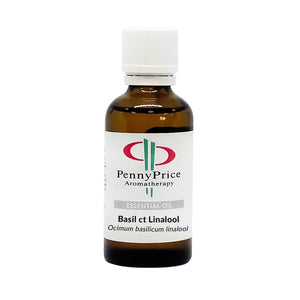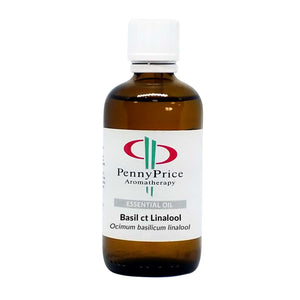Your Cart is Empty
- Shop
- Therapist Discount
- About Us
- FAQ, Blog & Downloads
- Courses
- Saturday Club
- Free Blending Series
- Product Catalogue
- Contact Us
- 01455 251020
- Login





Latin Name: Ocimum basilicum linalool
Plant Family: Labiatae
Extraction: Distillation of the herbs, flowering tops & leaves
Discover the versatility of Basil ct linalool Essential Oil! Famous culinary herb used for coughs, colds, and respiratory issues. A top note that blends harmoniously with bergamot, clary sage, lime, citronella, geranium, and hyssop. Experience the aromatic wonders of Basil Essential Oil today!
The many varieties of Basil originate from Asia and the Pacific Islands. The broadly oval and pointed green leaves support lovely purple-white flowers on a sixteen-inch stem. Swarms of bees hover around this plant in summer. North Africa, France, Cyprus, and Seychelles give us the essential oil through the European variety is said to be the best quality. Mainly produced in the Comoro Islands but also processed in Madagascar.
Pure Essential Oil - Available in 10ml, 25ml, 50ml & 100ml.
A very well-known and popular culinary herb Basil has been used widely, in Ayurvedic tradition where it is called tulsi (Holy basil) is used for problems with cough, colds, respiratory issues, insect bites and snake bites. In China, it is used for stomach and kidney ailments. In the West, it has been used for rheumatic pain, irritable skin conditions and nervous dispositions.
Basil is a pale yellow liquid with a light fresh spicy-sweet scent and balsamic undertone.
Basil is a top note and blends well with bergamot, clary sage, lime, citronella, geranium and hyssop.
Basil ct linalool Safety Data Sheet
Essential oils are very powerful and should be used with caution. Here are a few tips that you may find useful, although we advise that you consult a fully qualified, registered aromatherapist who will be able to advise you on the safe methods of use. Why not give us a ring at 01455 251020 or email info@penny-price.com if you are unsure we will be happy to help.
Inhalation: Undiluted essential oils may be inhaled from a tissue or a pillow (4-6 drops). Alternatively, they can be inhaled from a bowl of hot water (3 or 4 drops) or a diffuser (see table below), but avoid this if asthmatic. Never inhale essential oils directly from the bottle.
Shampoo and Bath Foam: Create unique aromatherapy bath foams or shampoos by mixing up to 30 drops of your own essential oil blend into 100ml of a suitable bath foam base or shampoo base.
Skincare Cream: Essential oils can be added to vegetable-based creams and then developed into facial products or topical creams. Do not add more than 15 drops of essential oil to 50ml of your base cream.
Pregnancy: Essential oils are best avoided during the first months of pregnancy. After the third month, many oils can be used safely and effectively. If in doubt, always consult a qualified aromatherapist.
Bath, Massage, Vaporiser: See the table below, which gives the correct amounts to use depending on age, and a brief guide on how to use.